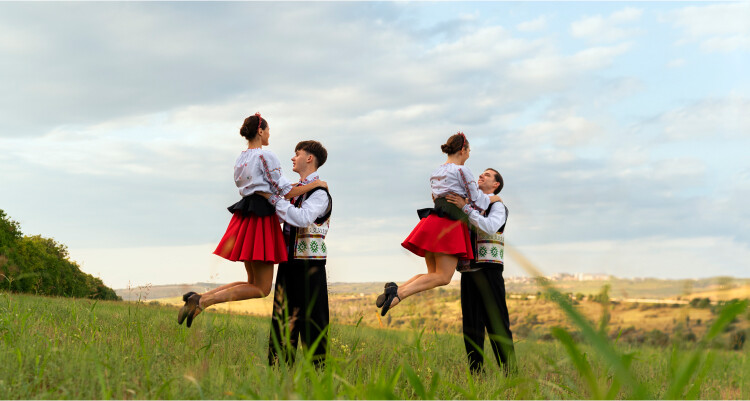The History and Evolution of Womens Kilt

Introduction
The kilt is one of Scotland's most iconic pieces of clothing, instantly recognizable and deeply rooted in tradition. While traditionally associated with men, the kilt has evolved significantly over the years, and today, womens kilt are a popular choice in both traditional and contemporary fashion. This article explores the journey of the womens kilt—from its historical beginnings to its transformation into a versatile and stylish garment.
The Origins of the Kilt
Kilts originated in the Scottish Highlands, where they were worn as part of the traditional Highland dress. The original kilt, known as the "great kilt" or féileadh mòr, was a large piece of cloth draped over the body and belted at the waist. This garment served as both clothing and shelter for the Highlanders, who could use it as a blanket in harsh weather.
Over time, the kilt evolved into a more tailored form, particularly for men. However, the garment's connection to Scottish identity and heritage was firmly established.
Early Forms of the womens kilt
Women in Scotland traditionally did not wear kilts like men. Instead, they wore skirts or arisaids—a large, shawl-like wrap often paired with a dress. The arisaid was typically plaid and served as a feminine equivalent to the male kilt.
In the late 19th century, a version of the kilt began to emerge for women, especially for those participating in Highland dancing or Scottish events. These kilts were often lighter, shorter, and designed specifically for ease of movement.
womens kilt in Scottish Tradition
The womens kilt gained popularity through its association with Highland dance, a cultural tradition in Scotland. womens kilts designed for Highland dancing allowed female dancers to wear tartan and honor their heritage. Highland dancing kilts are typically shorter than men's kilts, falling just above the knee, and they are often paired with a matching jacket or vest.
As women continued to participate in these cultural practices, kilts became more accepted as part of women's attire. However, they were still primarily worn for special occasions rather than everyday wear.
20th-Century Changes: Kilts for Women's Fashion
In the 20th century, they brought significant changes to women's fashion worldwide, including the popularity of kilts. During the 1940s and 1950s, designers began experimenting with kilts as a stylish skirt option. Tartan patterns became fashionable, and pleated skirts inspired by kilts started appearing in women's wardrobes.
Hollywood stars and influential fashion icons occasionally wore kilts, spreading the trend internationally. The kilt skirt became a symbol of uniqueness, especially in the 1960s and 1970s, when many young women embraced tartan and plaid styles as part of the counterculture movement.
The Modern-Day womens kilt
Today, the womens kilt is a highly versatile garment that blends traditional Scottish heritage with contemporary design. womens kilts are available in various lengths, colors, and styles, from classic tartans to modern prints. Modern kilts for women are designed to be stylish, comfortable, and functional, making them popular in casual wear, business attire, and even formal settings.
In recent years, the popularity of kilts for women has surged, as many fashion brands and designers have introduced new styles of kilts to appeal to a wide range of tastes.
Types of womens kilts
Type | Description |
Traditional Tartan Kilt | Made with classic Scottish tartans and pleated design, traditionally worn for formal events. |
Mini Kilt | A shorter, fashionable version often worn casually. |
Highland Dancing Kilt | Specifically designed for Highland dancing; shorter and lightweight for easy movement. |
Contemporary/Modern Kilt | Made in non-traditional colors and patterns, appealing to modern style tastes. |
Utility Kilt | Practical kilt style with pockets and durable fabric, suitable for outdoor activities. |
These variations allow women to choose a kilt style that fits their lifestyle and occasion, from traditional ceremonies to everyday casual wear.
How womens kilts Differ from Men's Kilts
While both men's and womens kilts share similar elements, there are a few notable differences:
- Length: womens kilts are often shorter, typically ending above the knee, whereas men's kilts tend to fall around knee level.
- Patterns and Colors: womens kilts may have brighter colors and more varied patterns than the traditional tartans often found in men's kilts.
- Fabric and Fit: womens kilts may use lighter fabrics and often have a more fitted waistline to enhance comfort and style.
These differences ensure that womens kilts are comfortable, fashionable, and suitable for a wide range of occasions.
Styling Tips for Wearing a womens kilt
Here are some popular ways to style a womens kilt:
- Casual Look: Pair a mini kilt with a simple T-shirt and ankle boots for a casual and stylish look.
- Formal Attire: Wear a traditional tartan kilt with a matching blazer or dress shirt for formal occasions.
- Modern Twist: Combine a contemporary kilt with a leather jacket and heeled boots for an edgy, modern outfit.
- Sporty Style: A utility kilt works well with a fitted top and sneakers for a sporty, functional look.
Experimenting with accessories like belts, scarves, and brooches can also add a unique touch to any kilt outfit.
Why womens kilts Remain Popular
The womens kilt has remained popular for several reasons:
- Cultural Connection: Kilts carry a strong cultural significance, allowing women to honor their Scottish heritage.
- Versatility: womens kilts can be dressed up or down, making them suitable for various events.
- Fashion Statement: Kilts add a distinct and timeless style to any wardrobe, blending tradition with contemporary trends.
- Comfort: Kilts offer comfort and ease of movement, especially in lightweight fabrics.
These factors make the womens kilt a favored garment for both cultural events and everyday wear.
Conclusion
The history and evolution of the womens kilt reflect a journey from cultural tradition to a modern fashion statement. Originally not worn by women, kilts have evolved into a versatile garment that honors Scottish heritage while embracing contemporary style. With so many types and styling options available, the womens kilt is a perfect blend of tradition, fashion, and functionality that has made it a timeless piece in women's wardrobes worldwide.
FAQs
womens kilts are typically shorter, may use lighter fabrics, and often have more varied patterns and colors than men’s kilts.
Yes, women can wear traditional tartan kilts, especially for formal events, Highland dancing, or cultural celebrations.
For a casual look, pair a mini kilt with a T-shirt and boots. Adding simple accessories can enhance the style.
Yes, many women find kilts comfortable, especially modern styles made with lightweight fabrics and fitted designs.
Womens kilts are available online, at Scottish heritage stores, and from fashion brands specializing in traditional attire.


